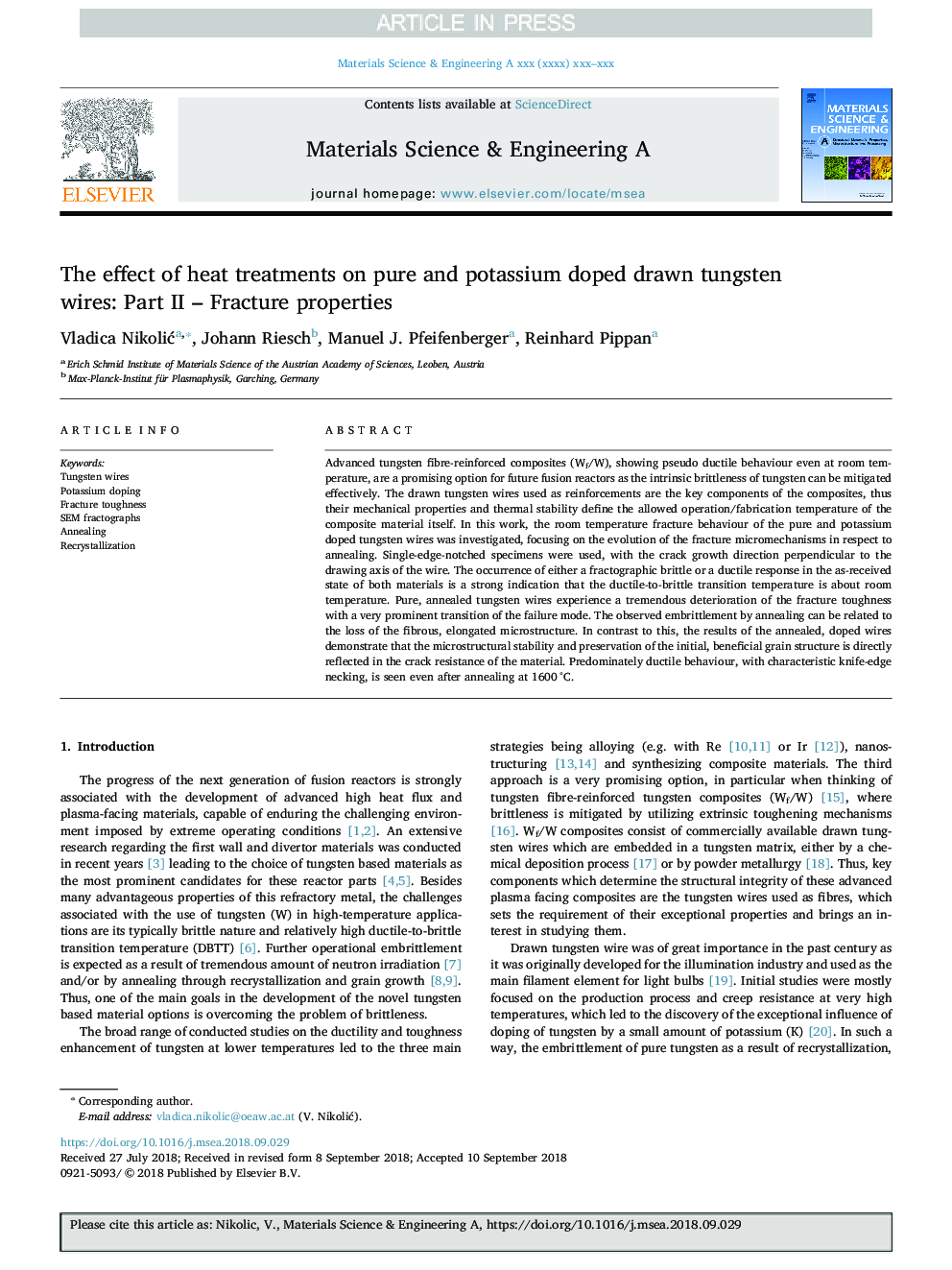| Article ID | Journal | Published Year | Pages | File Type |
|---|---|---|---|---|
| 11263588 | Materials Science and Engineering: A | 2018 | 14 Pages |
Abstract
Advanced tungsten fibre-reinforced composites (Wf/W), showing pseudo ductile behaviour even at room temperature, are a promising option for future fusion reactors as the intrinsic brittleness of tungsten can be mitigated effectively. The drawn tungsten wires used as reinforcements are the key components of the composites, thus their mechanical properties and thermal stability define the allowed operation/fabrication temperature of the composite material itself. In this work, the room temperature fracture behaviour of the pure and potassium doped tungsten wires was investigated, focusing on the evolution of the fracture micromechanisms in respect to annealing. Single-edge-notched specimens were used, with the crack growth direction perpendicular to the drawing axis of the wire. The occurrence of either a fractographic brittle or a ductile response in the as-received state of both materials is a strong indication that the ductile-to-brittle transition temperature is about room temperature. Pure, annealed tungsten wires experience a tremendous deterioration of the fracture toughness with a very prominent transition of the failure mode. The observed embrittlement by annealing can be related to the loss of the fibrous, elongated microstructure. In contrast to this, the results of the annealed, doped wires demonstrate that the microstructural stability and preservation of the initial, beneficial grain structure is directly reflected in the crack resistance of the material. Predominately ductile behaviour, with characteristic knife-edge necking, is seen even after annealing at 1600â¯Â°C.
Related Topics
Physical Sciences and Engineering
Materials Science
Materials Science (General)
Authors
Vladica NikoliÄ, Johann Riesch, Manuel J. Pfeifenberger, Reinhard Pippan,
